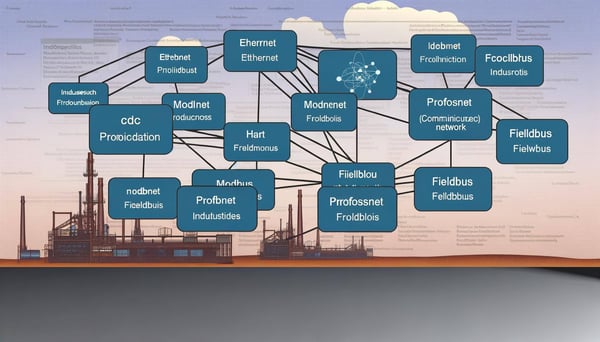
Fundamentals of SSCNET
In the world of industrial automation, communication protocols play a pivotal role in ensuring seamless interaction between different devices and components. One such protocol that has gained significant traction due to its robustness and efficiency is the SSCNET, or Servo System Controller Network. Developed by Mitsubishi Electric, SSCNET is a high-speed, high-performance communication system specifically designed for servo control applications.
Understanding SSCNET
SSCNET is a proprietary industrial network protocol that enables high-speed, deterministic communication between servo amplifiers and motion controllers. It ensures precise control and synchronization of servo motors, making it an ideal choice for applications that require complex motion control.
The protocol operates on a fiber-optic cable, which not only ensures high-speed communication but also provides immunity against electrical noise. This makes SSCNET a reliable choice for industrial environments where electromagnetic interference can be a significant concern.
Key Features of SSCNET
SSCNET is renowned for its high-speed data transmission capabilities. It can achieve a maximum communication speed of 50 Mbps, ensuring swift and efficient data exchange. This high-speed communication is critical in applications that require real-time control and synchronization of multiple servo motors.
Another notable feature of SSCNET is its deterministic nature. Unlike other industrial protocols that may experience variable data transmission times, SSCNET guarantees fixed cycle times. This ensures consistent and predictable performance, which is crucial in applications that require precise timing and coordination.
SSCNET Versions
Over the years, Mitsubishi Electric has introduced several versions of SSCNET, each offering enhanced features and capabilities. The first version, SSCNET I, was followed by SSCNET II, which offered higher communication speeds and improved noise resistance.
The latest version, SSCNET III/H, provides even faster communication speeds of up to 150 Mbps and supports a larger number of servo axes. It also features advanced diagnostic functions and improved safety features, making it a robust and reliable choice for modern industrial automation applications.
Applications of SSCNET
SSCNET is widely used in a variety of industrial automation applications. Its high-speed, deterministic communication makes it an ideal choice for applications that require complex motion control, such as CNC machines, robotics, and packaging equipment.

In CNC machines, SSCNET ensures precise control of the servo motors, enabling accurate and efficient machining. In robotics, it enables swift and coordinated movement of robotic arms, enhancing productivity and efficiency. In packaging equipment, SSCNET ensures synchronized operation of various components, enabling high-speed, efficient packaging.
Benefits of Using SSCNET
One of the primary benefits of using SSCNET is its high-speed, deterministic communication. This ensures precise control and synchronization of servo motors, leading to improved performance and productivity.
Another benefit is its robustness. Operating on a fiber-optic cable, SSCNET is immune to electrical noise, making it a reliable choice for industrial environments. Furthermore, its advanced diagnostic functions and safety features enhance system reliability and safety.
Implementing SSCNET in Your Industrial Automation System
Implementing SSCNET in your industrial automation system can enhance its performance and reliability. However, it requires careful planning and execution. Here are some steps to consider:

- Assess Your Requirements: Before implementing SSCNET, it's important to assess your requirements. Consider the number of servo axes you need to control, the required communication speed, and the level of noise immunity required.
- Select the Right SSCNET Version: Based on your requirements, select the appropriate version of SSCNET. If you require high-speed communication and control of a large number of servo axes, consider using SSCNET III/H.
- Plan Your Network Architecture: Plan your network architecture carefully to ensure efficient data exchange. Consider factors like cable lengths, the number of devices, and the layout of your industrial environment.
- Implement Safety Measures: Implement safety measures to protect your system and personnel. This includes using safety-rated devices and implementing safety functions provided by SSCNET.
By following these steps, you can successfully implement SSCNET in your industrial automation system and reap its benefits.
Conclusion
In the realm of industrial automation, SSCNET stands out as a high-speed, deterministic communication protocol that ensures precise control and synchronization of servo motors. Its robustness, coupled with its advanced features, makes it a reliable choice for a wide range of applications.
Whether you are looking to enhance the performance of your CNC machine, improve the efficiency of your packaging equipment, or boost the productivity of your robotic system, SSCNET can provide the communication capabilities you need. Implement it in your industrial automation system and experience the difference it can make.



